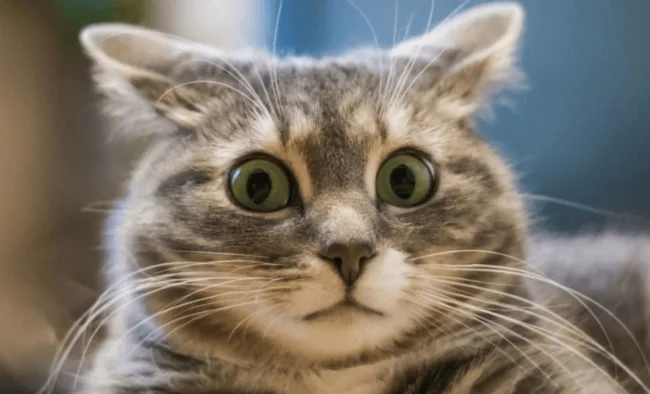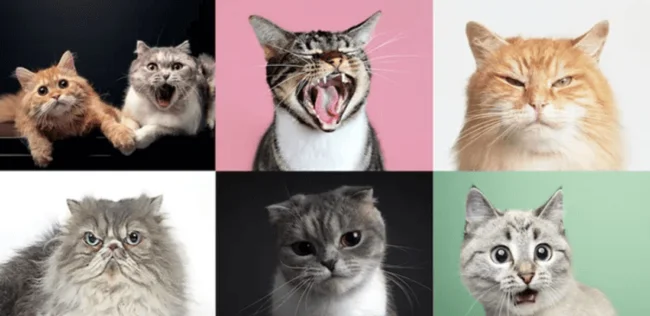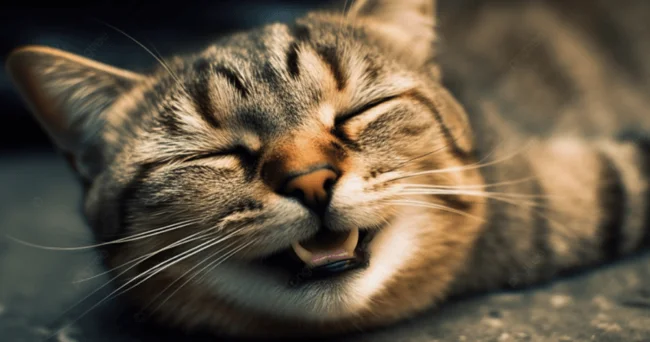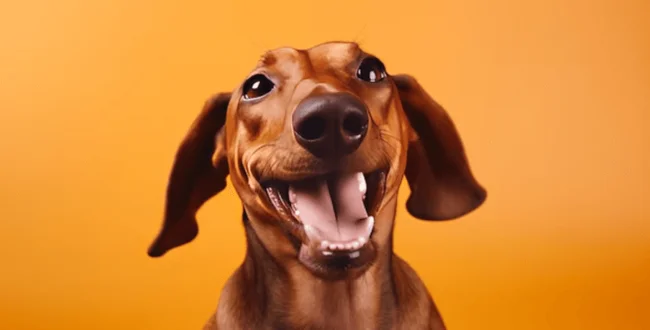Cats have 300 facial expressions that they use when communicating (4 photos)
For a long time it was believed that animals do not have facial expressions, which means they are not able to express emotions through the expression of their faces. However, recently this information has increasingly been refuted. 
Cats have far more facial expressions than humans
It has been known for quite some time that cats not only have facial expressions, but also use them to express emotions. In a recent study, American scientists recorded a total of 276 different facial expressions of cats.
For comparison, humans have only 44 facial expressions, dogs have 27, and chimpanzees have 357. According to the researchers, depending on the situation, the animals' facial expressions varied from playful to aggressive, but more often they were friendly.
How cats use facial expressions to communicate
Despite the fact that cats are one of the most beloved pets around the world, there is not much research on the topic of their communication and expression of emotions. Moreover, they mainly concerned ordinary purring and meowing. Also, many works are aimed at studying the connections between cats and people over the past 10 thousand years, that is, since they were domesticated.
In 2020, we talked about how cats can communicate with their owners using facial expressions. However, then it was only about a smile. In a new study, scientists observed fifty cats living at the CatCafe Lounge in Los Angeles for a year to study their facial expressions in detail. As the authors themselves say, in a cat cafe they could observe spontaneous interactions between animals and record the expressions of their faces, which made them easier to decipher. 
Researchers have recorded nearly 300 different facial expressions in cats
Each individual cat expression includes four of more than twenty unique movements, the study reported. These movements include parted lips, blinking, curled corners of the mouth, different ear positions, nose licking, and even widened or narrowed eyes.
Observing the expression of the cats' faces, scientists even noticed how it changes when the cats' play develops into real aggression. At the same time, there was no doubt that the animals really began to show aggression. For example, one of the cats squatted down, began to hiss, and then ran away.
As the researchers describe, the coca cats did not show aggression, their eyes were relaxed, their ears and whiskers were pushed forward. When the situation changed, the ears moved back, and the appearance quickly began to express aggression and tension. 
Cats can smile and even laugh
What facial expressions do cats have?
Studying the facial expressions of cats, scientists came to the conclusion that they have much more friendly expressions - approximately 45% of the total. Only 37% have aggressive facial expressions. Another 18% of expressions, according to scientists, were ambiguous or could refer to two categories at once. This was reported in a study published in Behavioral Processes.
But the most interesting thing is that many of the cats' facial expressions were the same as the facial expressions of humans and other animals such as dogs and monkeys. In particular, the common expression was what the researchers called “regular game face.” With this expression, the corners of the mouth are drawn back, forming a smile.
However, many facial expressions remained a mystery to scientists. To accurately decipher them, additional research will be needed. The team hopes that this work will not only shed light on the facial expressions of cats, but also other animal species. 
Cats and dogs have the same facial expressions
This information can be useful for shelters and various societies that provide assistance to animals, as they will be able to better understand their charges, in particular cats. In addition, based on the data obtained, you can create applications that will decipher facial expressions. Thanks to this, pet owners will be able to better understand their pets.
Let us recall that earlier scientists discovered that many animals and even birds can laugh. Like people, laughter means fun. As we said earlier, animals often laugh while playing. Female monkeys sometimes tickle male monkeys, causing them to laugh too. All this suggests that animals are actually much more similar to us than we previously thought.
But how did cats end up making more facial cues than humans? There is no exact answer to this question. It is possible that this was influenced by domestication. It probably contributed to the development of an intraspecific “repertoire” of facial expressions.





